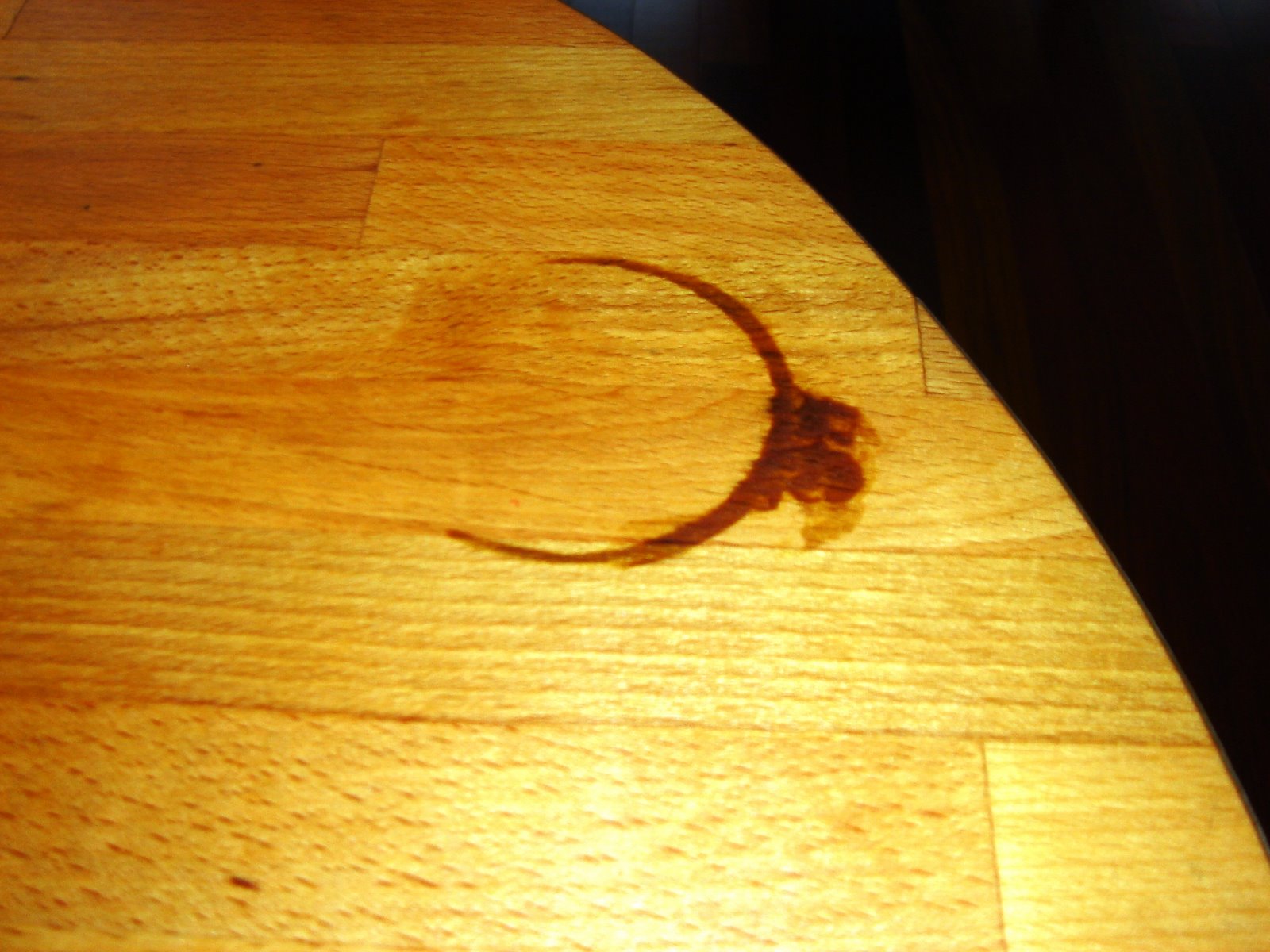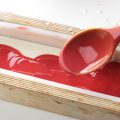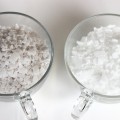 While there are many different ways to make soap, the two major methods are Melt and Pour (basic instructions here) and Cold Process. One major component of making cold process soap from scratch is lye (also called caustic soda or sodium hydroxide). To make beautiful cold process soap, you need to start with the basics – water, lye and fats. If you’re unsure of the scientific method to making soap, this site has the best, most understandable way to explain it that I’ve seen.
While there are many different ways to make soap, the two major methods are Melt and Pour (basic instructions here) and Cold Process. One major component of making cold process soap from scratch is lye (also called caustic soda or sodium hydroxide). To make beautiful cold process soap, you need to start with the basics – water, lye and fats. If you’re unsure of the scientific method to making soap, this site has the best, most understandable way to explain it that I’ve seen.
Soapmaking is like many other activities – like for example, driving a car. Driving a car is inherantly dangerous. So, we go to school to learn how to drive a car, and now, when used properly, our cars are a wonderful and safe tool. When you learn to use lye safely, it is a snap to make all kinds of soap recipes from scratch.
 Lye is a poison and needs to be treated with care. It is a corrosive alkaline substance that reacts with the molecules in fat to combine and turn into soap. Lye comes in flakes, pellets, micro beads, and coarse powder. It is also available as solution, often dissolved in water. It is used in everything from food production (brining olives and making lutefisk) to making bio diesel to drain cleaner. Despite is varied uses and the fact that you can often purchase lye (or a form of lye) in grocery stores and hardware stores, there are still safety considerations to take into account when working with lye. Both dry and wet lye solutions are corrosive and will degrade organic tissue.
Lye is a poison and needs to be treated with care. It is a corrosive alkaline substance that reacts with the molecules in fat to combine and turn into soap. Lye comes in flakes, pellets, micro beads, and coarse powder. It is also available as solution, often dissolved in water. It is used in everything from food production (brining olives and making lutefisk) to making bio diesel to drain cleaner. Despite is varied uses and the fact that you can often purchase lye (or a form of lye) in grocery stores and hardware stores, there are still safety considerations to take into account when working with lye. Both dry and wet lye solutions are corrosive and will degrade organic tissue.
While working with sodium hydroxide, always use safety glasses, heat and chemical resistant gloves and mix the lye in a room with adequate ventilation. Lye can cause chemical burns, blindness and may be fatal if swallowed.
When working with lye, keep in mind that when mixed with water, it produces an exothermic heat reaction and heats up to 200 degrees. You need to mix your lye water solution in a fully heat safe container with plenty of head space. Ideally, you will always mix over a sink to prevent any unfortunate accidents, like the one below. Lye stains wood and eats away furniture varnish.

Always add your lye to your water. Doing it the opposite way can cause an overflowing, volcanic type of reaction.
Avoid all contact with aluminum. It will ruin your soap and also produce hydrogen as a by product. Hydrogen is highly flammable and explosive.
Lye should be stored in airtight containers. Because of its propensity to draw moisture from the air, air tight plastic containers work best. Lye is highly corrosive and can eat away at glass material over time. Old lye sometimes acts as though it is not working. This is often because the lye has taken on so much moisture that when it is weighed out, it is significantly heavier with water weight than lye weight.
Always wear gloves & goggles (glasses are not enough, goggles)
Measure out distilled water & slowly pour and stir lye into water
Do not breathe in lye fumes; work in a well ventilated room
Keep small children and animals out and away from your soapmaking
Protect your workspaces with newspaper or cardboard
Lye corrodes metal so remove jewelry before making soap
Lye in the eys = trip to emergency room
Lye on your skin = flush with water. Some soapmakers swear by vingear instead of water.
Soap utensils are for soap. Food utensils are for food. Never the twain should meet.
Soap needs to cure, undisturbed, from either pets or small children
Soap molds need to be either lined with wax paper or be made from a flexible plastic. Never make soap in glass or aluminum.
From the MSDS sheet:
- If swallowed:
- Rinse mouth with water and drink one or two glasses of water. Do not induce vomiting! Immediately get medical attention or call your poison control center at 1-800-222-1222.
- If in eyes:
- Immediately flush eyes with water. Remove any contact lenses and continue to flush eyes with water for at least 20 minutes. Immediately get medical attention or call your poison control center at 1-800-222-1222.
- If on skin:
- Gently wipe product from skin and remove any contaminated clothing. Flush skin with plenty of water for at least 15 minutes and then wash thoroughly with soap and water. Contact a physician or call your poison control center at 1-800-222-1222.
Remember, just like any ‘dangerous’ tool, lye can be used safely to make amazing and wonderful soap. Use it wisely and responsibly.





Thanks Anne-Marie! This helps me understand more about lye and the precautions, and steps to take to make sure I am safe when making CP soap! I am inspired!!!
Great safety reminders. You look better than anyone I've ever seen in Goggles!
That "cartoon" explanation of the process is a great way for nonsoapers to get the process! Thanks for sharing, very clever!
It's my goal to make soap one day using the actual lye so I bookmarked this article to have on hand when I decided to take the brave step into the world of lye.
Thank you so, so much for your positive feedback to this blog post. I appreciate it.
The subject is so serious that I wasn't sure you would appreciate it. Now, I'm inspired to do more CP stuff here! =)
Anne-Marie, you're wonderful! I often forget to get over to TeachSoap.com to refresh my memory, so I really appreciate the advice you give here on your blog!
I were a respirator when I mix my lye. It's better than accidentally breathing in nasty fumes.
yes, thank you. So eloquently put.
Thank you Anne-Marie for an informative post. When I mention that I craft glycerine soap I find myself explaining to people that there are two kinds of methods (mp and cp). I've personally chosen mp because I do enjoy the immediate satisfaction of that process and safety has to be a consideration as well for me for the time being -because I don't have the proper space and I have identical twin boys who are 7. Your post comfortably confirms my decision to stayand strive in the mp arena!
And she knows about lutefisk! I just can't bring myself to eat it knowing it soaked in lye. I don't think you can get it all off. I'm surprised my dad hasn't suggested just using lutefisk instead of lye to make a special soap for him!
Good reminder of proper safety protocol.
Ann-Marie, great post! I am often guilty of getting "too comfortable" when working with lye. It one does not respect the lye, one slip-up could do much harm. Thanks for the reminder.